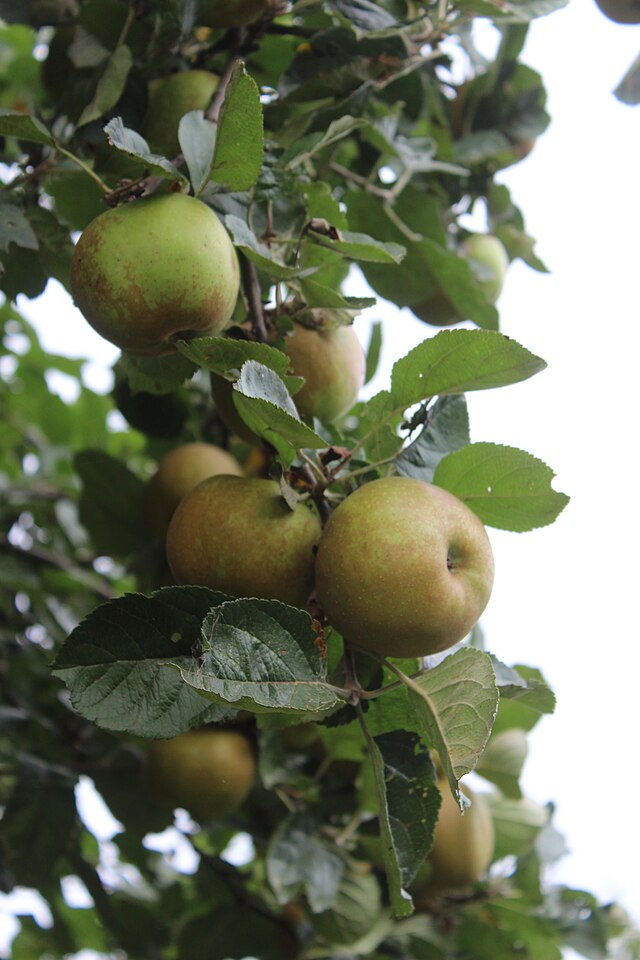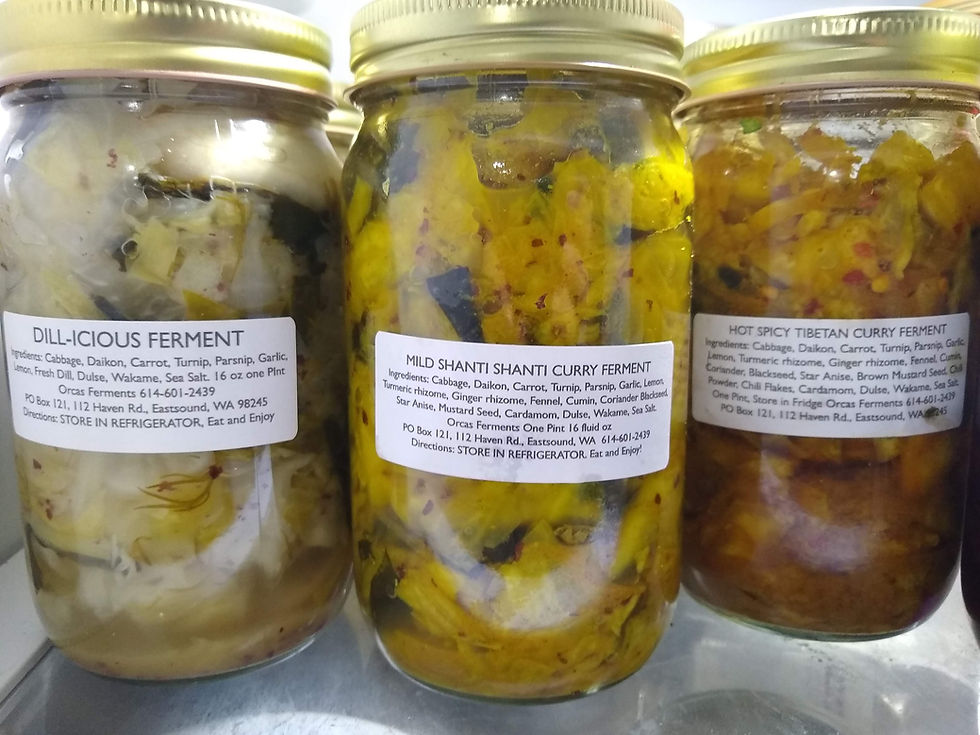Defensive Design: How to Build Edible Landscapes That Survive Reality
- Wolfy
- 4 days ago
- 7 min read
Key Takeaways
Know Your Threats — not your neighbors’ rumors or that TikToker in North Carolina diagnosing your tree from a blurry screenshot.
Organize Them, Prioritize Them — clarity beats panic every time.
Fully Research Prevention, Management, and Mitigation — understand the “why,” not just the “what.”
Integrate Them Into Your Design — build resilience in from the beginning, not after the damage is done.
And Don’t Accept Advice From Unreliable Sources — trust data, patterns, and lived ecology, not drive-by opinions.
Garden and Edible Landscape Design Comes First, Not Last
In my former life as an engineer, I spent years designing software that anticipated attacks long before they arrived. Not reacting—anticipating. That exact discipline carries straight into my landscape designs. Call it risk-based design, call it defensive design, or call it what it really is: the refusal to build vulnerable and naïve gardens.
The threats to your orchard, garden, or food stream arrive from all directions—airborne spores, wet soils, rodents, humans, the nursery itself, even your own assumptions. Nature isn’t against you; she’s simply not sentimental. The sooner you stop taking it personally, the faster you can start designing like someone who intends to win.
As a designer, I group threats into distinct, targetable “classes.” Let’s walk through one or two so you can see how defensive design actually works—not in theory, but in the field--and how you can design defensively before you put a shovel in the ground.
There are many things that can go wrong in a garden, but only a few that will actually take a swing at you.
Risk Class: Fungal and Bacterial
Key Mitigations: Species Selection • Rootstock Selection • Spacing • Diversification
Fungi and bacteria are a fact of life—on your skin, in your soil, under your nails, and across every inch of your garden. Most of them are benign or even beneficial: the mycorrhizae that feed your trees, the lactobacillus that ferments your vegetables, the decomposers that return your waste to soil. But the few you don’t want—the pathogens that attack bark, fruit, and vascular tissue—you must learn to recognize, understand, and design against.
Your fruit and nut trees are pillars of your food stream. They give you calories, stability, and a kind of quiet, generational joy. So, as an example, let’s talk about Apple Anthracnose, which hit the San Juan Islands so hard a few years back that nurseries paused apple tree sales and people stopped planting them altogether.
Clients still want apples, of course. So we design for reality, not dreams.
Key considerations:
Sunlight & Airflow
Give your apple trees room. Real room. Not the “I saw this tight hedgerow in Yakima” fantasy. Wrong climate. Wrong humidity. Wrong ecology. Here, you space generously or you lose.
Disease-Resistant Varieties
Some cultivars fold at the first sign of Anthracnose: Akane, Gala, Melrose, Spartan—beautiful fruits, tragic constitutions. Skip them. Choose fighters.
Gold Rush remains the champion, especially when paired with the right rootstock.
Rootstock That Can Actually Defend Itself
Rootstock is the brains of your tree—its immune system, its posture, its ability to endure stress. In the Maritime Northwest, M111 is a force of nature precisely because it was bred to reckon with nature. It produces a vigorous, near standard-sized tree that can anchor your entire design strategy.
Spacing That Reflects Reality
M111 produces big trees. Big trees need space. Give it, and they’ll reward you for decades. Starve them, and you’ll breed disease with your own hands.
Diversification
Diversity is not a slogan—it’s a survival strategy. Unless you’re a commercial grower, you don’t need two of the same apple. Plant one or two M111 and graft multiple varieties onto them. Fewer trees, more fruit, lower risk. Remember the Irish potato famine? Monocultures write their own tragedies.
Spraying
I don’t spray much—and not because I’m a purist or a monk of the chemical-free order. I simply haven’t needed to. Too many gardeners treat their trees like burning buildings and themselves like firefighters, blasting anything that looks less than storybook-perfect. It’s the classic social-media reflex: someone posts a leaf with a wrinkle, and five seconds later a stranger hollers leaf curl! as if pronouncing a curse.
Don’t be either of those people.
If you designed well—sunlight, spacing, airflow, rootstock, soil biology—your trees shouldn’t need rescue missions. I’ve grown hundreds of fruit trees, and I’ve almost never sprayed them. Not once. Real health starts in the ground, not in a bottle.
Before you even consider a treatment for any "disease", you need a diagnosis with at least two legitimate data points: pattern and progression. What does it look like, and what is it doing? Only then do you choose the option that supports the tree rather than doing the job for it. Sometimes that’s nothing. Sometimes it’s a little copper fungicide, applied with intention rather than panic.
Start clean. Stay clean. Design well. Spraying should be the exception, not the ritual.
Pro tip: Goldrush on M111. Great taste. Great keeper. Will survive most social media advice.
Risk Class: Mammalian Burrowers (Voles, Moles, and the Quiet War Under Your Feet)
Key Mitigations: Habitat Control • Root Protection • Ground Disturbance • Predator Integration • Cleanliness
You wake up one morning and something in the garden feels off. Your fig tree—yesterday fine, today leaning south like it’s trying to escape. You walk over, grab the trunk, give it a gentle wag. It moves too easily. Your stomach drops. You tug again and the whole thing slips out of the soil with the resistance of a spoon in pudding. Nothing but a stub where a root system should be. No anchor. No future. No fig tree.
You stand there holding the carcass of a tree that should’ve lived decades. You swear. You grieve. Then you look it up, and the truth lands with the elegance of a sledgehammer: voles.

Every landscape has its tricksters, its thieves, its uninvited tenants. In the Maritime Northwest, the most persistent are the burrowers—voles, moles, and the constellation of rodents that move through your orchard like shadow architects, constantly rearranging the subsoil.
They’re not enemies. They’re signals.
If fungal pathogens whisper that something is off in your canopy, burrowers announce that something is out of balance below your feet. They don’t show up without a reason, and they don’t explode in number unless we—yes, we—have built something they interpret as opportunity.
You never forget your first vole kill zone. I certainly didn’t. But I also learned that the voles didn’t “attack.” I created the conditions that made them bold.
Habitat Control
Most people don’t “have vole problems.” They engineer vole confidence.
Deep mulch up to the trunk. Groundcovers thick enough to hide a family of raccoons. Beds planted shoulder-to-shoulder with nowhere for predators to patrol. A buffet of fallen apples decomposing quietly into sugar.
We create comfort, and voles respond exactly how nature taught them to respond: by thriving.
They want cover. They want calories. They want stability.
Remove those three things—not harshly, not vindictively, just mindfully—and you turn down the ecological amplifier that created the surge.
A clean, exposed root zone isn’t punishment. It’s clarity.
You’re not landscaping. You’re rebalancing the conversation between your plants and the animals that share the land.
Root Protection
Hardware-cloth baskets aren’t cages—they’re bumpers. They give young trees the chance to establish before entering the wider ecological negotiation.
Think of them like training wheels: temporary structure that prevents catastrophic failure while roots thicken and lignify. Over time the tree participates in the ecology more confidently, less vulnerable to a rodent population spike.
Ground Disturbance
Burrowers love stillness. Stable tunnels. Predictability. Quiet. They love the ground cover of snow and hate the melt.
Disturbance isn’t aggression—it’s participation. It reminds them that the ecosystem is alive, shifting, dynamic.
Kick a mound. Break a tunnel. Add uncertainty.
Not to punish, but to communicate: This territory is shared.
Predator Integration
Predators are not the cleanup crew of your mistakes—they’re part of the balance. Cats, terriers, owls, hawks—these aren’t “solutions.” They’re collaborators.
Cats, for instance, are astonishingly gifted at rodent control. Not the houseplants-with-attitude variety—actual outdoor hunters, the ones that prowl with the calm confidence of creatures descended from desert royalty. Pro tip: put bells on the cat collar to give birds a warning, or just live with the collateral damage. There is ALWAYS collateral damage, no matter how eco-friendly, organic, and conscientious you are trying to be.
A good hunting cat teaches an orchard discipline. A rat terrier enforces boundaries. An owl box invites the night shift to help restore equilibrium.
Predators don’t eliminate. They moderate. They flatten the curve of your own design errors.
Remove the Buffet
Cleanliness is not aesthetic. It’s ecological hygiene.
The vineyard industry has a saying I love: Start clean. Stay clean. They’re right.
Dropped fruit, tangled prunings, piles of annuals "decomposing," unbroken vegetation mats—all of these become invitations. Cleanliness lowers the carrying capacity for voles without harming the voles themselves. It prevents the conditions where populations overshoot and collapse.
A balanced orchard or edible landscape begins on the ground. Not with sprays. Not with traps. With stewardship.
The Philosophy Behind Burrower Management
The strategy is not elimination—elimination is a fantasy that leads to overreaction, cruelty, and short-term thinking.
The goal is balance. Another aspect of design.
Every creature in your landscape has a purpose, including voles. When their numbers spike, it’s rarely because they’ve misbehaved—it’s because we tilted the system in their favor. And when we correct those conditions—cleanliness, spacing, ground disturbance, predator access—the system rights itself without escalation.
Defensive design is not about hostility. It’s about humility. It’s the willingness to see your garden as a living equation and yourself as one variable among many.
Burrowers, like many other species, aren’t villains. They’re teachers—and they’re often the first to tell you when your design needs refinement.
The Practical Philosophy Behind Defensive Design
The key to defensive design is not paranoia—it’s clarity. Know what can harm your system, make a plan, and execute it. As a colleague of mine at Microsoft liked to say, If you’ve got time to do it twice, you’ve got time to do it right the first time. In gardens, this is law. False starts are expensive in money, time, and morale. Think before you think.
Design defensively and you’ll spare yourself the heartbreak of digging up trees, replanting beds, chasing diseases, and starting over.




Comments